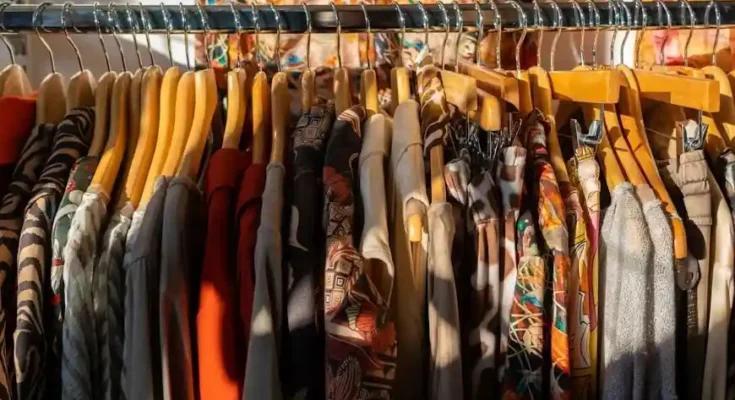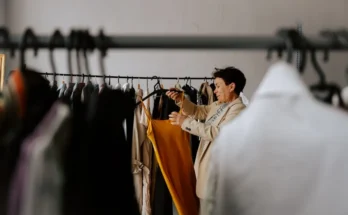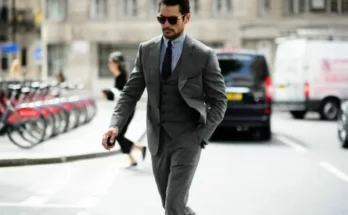Fashion is often dismissed as frivolous or vain—a parade of seasonal trends, glossy magazines, and fleeting obsessions. But to limit fashion to what we see on runways or in shop windows is to ignore its deeper truth. Fashion is not just what we wear. It’s how we show the world who we are, sometimes even before we speak a word.
Clothing becomes a visual language, rich in metaphor and memory. It can comfort, provoke, celebrate, or shield. It reflects the moment while preserving the past. Fashion evolves with society, embodying shifts in politics, identity, and emotion. And as much as it changes with time, it also remains intensely personal—no two wardrobes ever tell the same story.
The Personal Politics of Style:
-
Dressing the Inner Self
What we choose to wear each day is a decision—conscious or unconscious—about how we want to be seen. A crisp blazer might convey authority, while an oversized sweater whispers comfort. A bold color can signal confidence or rebellion. A minimalist look might say, “I need clarity,” or “Don’t crowd me.” Every outfit is an expression of internal landscapes made external.
Fashion becomes our second skin, but one we can change at will. Unlike many aspects of our identity, clothing is fluid and forgiving. We can reinvent ourselves every morning with nothing more than a few thoughtful choices from the closet. This mutability is power. It means we’re never stuck. We can experiment, shed skins, try on personas, and discover parts of ourselves we never knew existed.
-
Identity and Representation
Fashion also intersects with race, gender, culture, and class. For marginalized communities, it can be an act of resistance or pride. From the afros and dashikis of the Black Power movement to the rainbow flags and androgynous styling of queer fashion, clothing has long been used to push back against erasure and demand visibility.
The rise of inclusive fashion—featuring all sizes, ages, skin tones, and abilities—is proof that representation in style matters deeply. When people see themselves reflected in campaigns and collections, it affirms that they belong in the narrative. It turns fashion into a force not just for self-expression but for collective empowerment.
The Rhythm of Trends and Timelessness:
-
The Allure of the New
Fashion is a paradoxical world—always chasing the new while endlessly recycling the past. Trends emerge quickly, sweeping through cities and screens, telling us what’s “in” and what’s not. There’s a thrill in the chase, in spotting the next color, cut, or silhouette that might define a season.
This hunger for novelty isn’t purely superficial. It reflects a deeper human desire for progress and reinvention. Just as technology or art evolves, so too does fashion respond to cultural mood shifts. When society becomes more relaxed, silhouettes loosen. In times of uncertainty, neutral colors dominate. In moments of hope, we crave brightness and boldness.
-
Vintage and Sustainability
Yet, even as we look forward, there’s growing reverence for the past. Vintage clothing is having a renaissance—not just as an aesthetic but as an ethical choice. Wearing second-hand isn’t just about retro appeal; it’s a form of fashion activism. It resists fast fashion’s waste and exploitation. It honors the craftsmanship of earlier eras. It allows us to wear history on our backs.
By embracing pieces with stories, fashion slows down. It becomes intentional rather than disposable. People are learning that timeless doesn’t mean boring—it means enduring. A well-made coat from the ’70s might outlive ten fast fashion jackets and tell a much better story along the way.
Fashion and Emotion:
-
Clothes as Armor or Comfort
There are days when fashion is a shield. A sharp suit before a big presentation. Heels that give height and confidence. A jacket that feels like a hug. These aren’t just garments—they’re tools that help us navigate the world, amplify our strengths, or hide our wounds.
What we wear affects how we feel. Psychologists call it “enclothed cognition”—the idea that our clothes impact our mental processes. When you wear something you love, you stand taller. When you wear something that doesn’t fit who you are, you shrink. It’s more than style—it’s psychology stitched into cotton and silk.
Fashion helps us perform roles, but it can also help us heal. After heartbreak, a new look can symbolize a fresh start. After loss, black attire can carry the weight of grief. After triumph, a bold outfit can become a trophy. Every outfit is a mood board, each thread a note in the music of our emotions.
-
The Ritual of Getting Dressed
There’s something meditative about the act of dressing. Picking out clothes isn’t always a task—it’s a ritual. It’s the moment when you meet yourself in the mirror and say, “This is who I am today.” Sometimes that person is understated. Sometimes they’re electric. The point is not to be consistent—but to be honest.
In this daily ritual, fashion becomes a form of self-respect. Even on days when no one sees us, the clothes we choose tell us we matter. We are worth the care. We are worth the color, the softness, the structure. And in those quiet moments of zipping up a dress or tying a tie, we find grounding.
The Future of Fashion:
-
Tech and Textiles
Fashion is no longer confined to cloth. The future is unfolding in smart fabrics, 3D-printed accessories, and clothing that changes with temperature or mood. Wearable tech isn’t just about function—it’s merging with fashion to become beautiful and responsive.
Designers are experimenting with biodegradable textiles, plant-based leathers, and garments that track health metrics. The lines between fashion, science, and technology are blurring, giving birth to a new age where clothing might adapt to our bodies and environments in real time.
As fashion enters the digital realm, virtual fashion is also rising—clothes that exist only in augmented reality or gaming platforms. These might sound surreal, but they pose real questions: What is fashion without fabric? And what does self-expression look like when the self is digital?
-
Fashion with a Conscience
For decades, fashion was synonymous with excess and exclusivity. But that’s changing. Brands are being held accountable for labor practices, carbon footprints, and cultural appropriation. Consumers are becoming curators, asking not just “How does this look?” but “Where did it come from?” and “Who made it?”
Sustainable fashion is no longer niche—it’s becoming standard. Thrift, upcycle, rent, repair: these are the new mantras. And with Gen Z at the helm, fashion is getting louder about justice. Statements on shirts are turning into statements of action. Activism is being stitched into seams.
Fashion, after all, has always had a voice. Now, it’s learning to use it more wisely.
Conclusion:
Fashion is not just about trends or status. It’s not just about what’s hot this season or who wore it best. At its deepest level, fashion is a mirror. A canvas. A choice.
It allows us to be art and artist at once—to construct and deconstruct ourselves. To say things we don’t know how to say out loud. To feel bold or invisible, fierce or soft, seen or mysterious.
Whether you’re curating a closet full of couture or patching together thrifted treasures, what matters is that you’re telling your story. Clothing will fade, trends will pass. But the feeling of finding an outfit that feels like you? That never goes out of style.
So dress how you feel. Or dress how you want to feel. Either way, fashion will meet you there—at the intersection of who you are and who you might become.




